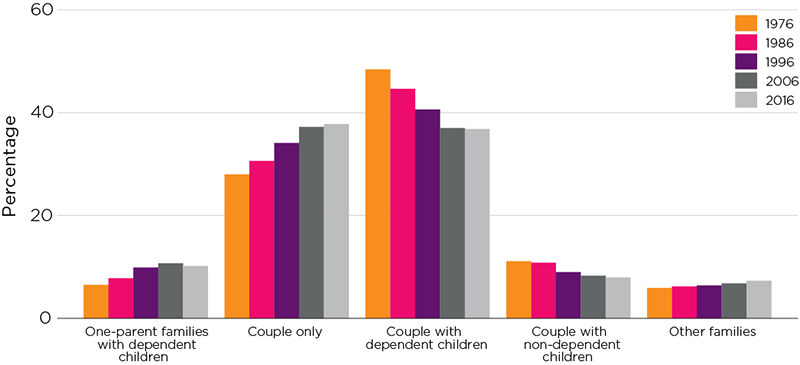Labour Force Status of Families – ABS 2021
SOURCE: Australia’s Bureau of Statistics explores how families engage with the labour market – June 2021
Key statistics
In June 2021:
- 1 in 7 families were one parent families (15.0%)
- There were 1.4 million jobless families (19.5%)
COVID-19 Impacts
The latest annual data presented in this release of Labour Force Status of Families was collected in June 2021 and reflects the labour market conditions at that point in time. In June, Labour Force data reflected impacts from a lockdown in Victoria, but it was before the larger impacts from the longer lockdowns in New South Wales, Victoria and the Australian Capital Territory.
Given the extent of major changes in the labour market during the pandemic, quarterly estimates have also been included in this release, for the months of March, June, September and December of 2019 and 2020, and for the first half of 2021. These estimates have been included with the release of annual estimates in the Data Downloads and in the TableBuilder release.
Microdata: Labour Force Status of Families, Australia (TableBuilder)
While the quarterly estimates are expected to be a temporary addition to this release, a final set of quarterly estimates may be included in the June 2022 release.
What is a family?
A family is defined as two related people who live in the same household. This includes all families such as couples with and without children, including same-sex couples, couples with dependants, single mothers or fathers with children, and siblings living together. At least one person in the family has to be 15 years or over. A household may contain more than one family.
See the Labour Force Status of Families methodology for more information.
Of All families
In June 2021,
- 1.1 million (15.0%) were one parent families with 79.8% of these being single mothers
One parent families
There were 1.1 million one parent families in June 2021, accounting for 15.0% of all families. Of these one parent families, 59.5% (651,700) had dependants (including children under 15), which is an increase of 45,600 (7.5%) since June 2011. (Table 1)
One parent families with dependants
The vast majority (81.8%) of one parent families with children and dependants were single mother families. Of all one parent families with children and dependants, 52.7% had a youngest dependant aged 0–9 years. (Table 1, Table 9)
There were 416,700 one parent families where the parent was employed and had dependants, representing 63.9% of all one parent families with dependants. Of these families:
- 78.4% (327,000) had an employed single mother
- 21.6% (90,000) had an employed single father (Table 9)
In one parent families with dependants, 61.3% of single mothers were employed compared with 75.8% of single fathers.
(Table 9)
Over three-quarters (77.8%) of families with employed single mothers and dependants had mothers aged between 35 and 54 years. (Table 7)
The proportion of one parent families with dependants where the parent was employed generally increased with the age of the youngest dependant. The proportion with an employed parent was lowest when the youngest dependant was under 5 (45.3%) and the highest when the youngest dependant was between 15 and 24 (72.2%). This pattern was more prominent for single mothers. (Table 9)
Jobless families
In June 2021, there were 1.4 million jobless families (down from 1.5 million in June 2020), representing 19.5% of all families, meaning each family member aged over 15 years was unemployed, retired or otherwise not in the labour force.
Jobless one parent families with dependants
There were 190,000 jobless one parent families with dependants in June 2021, about one third (29.1%) of all one parent families with dependants. 90.2% of these jobless one parent families had children under 15.
This equated to an estimated 315,000 children aged 0-14 years in these families. (Table 1, Table 4)
Faces of unemployment 2021
The recent study undertaken by Aust, Council of Social Services looks at unemployment in the wake of COVID-19 restrictions and recession. The report offers further statistical information and analysis.


